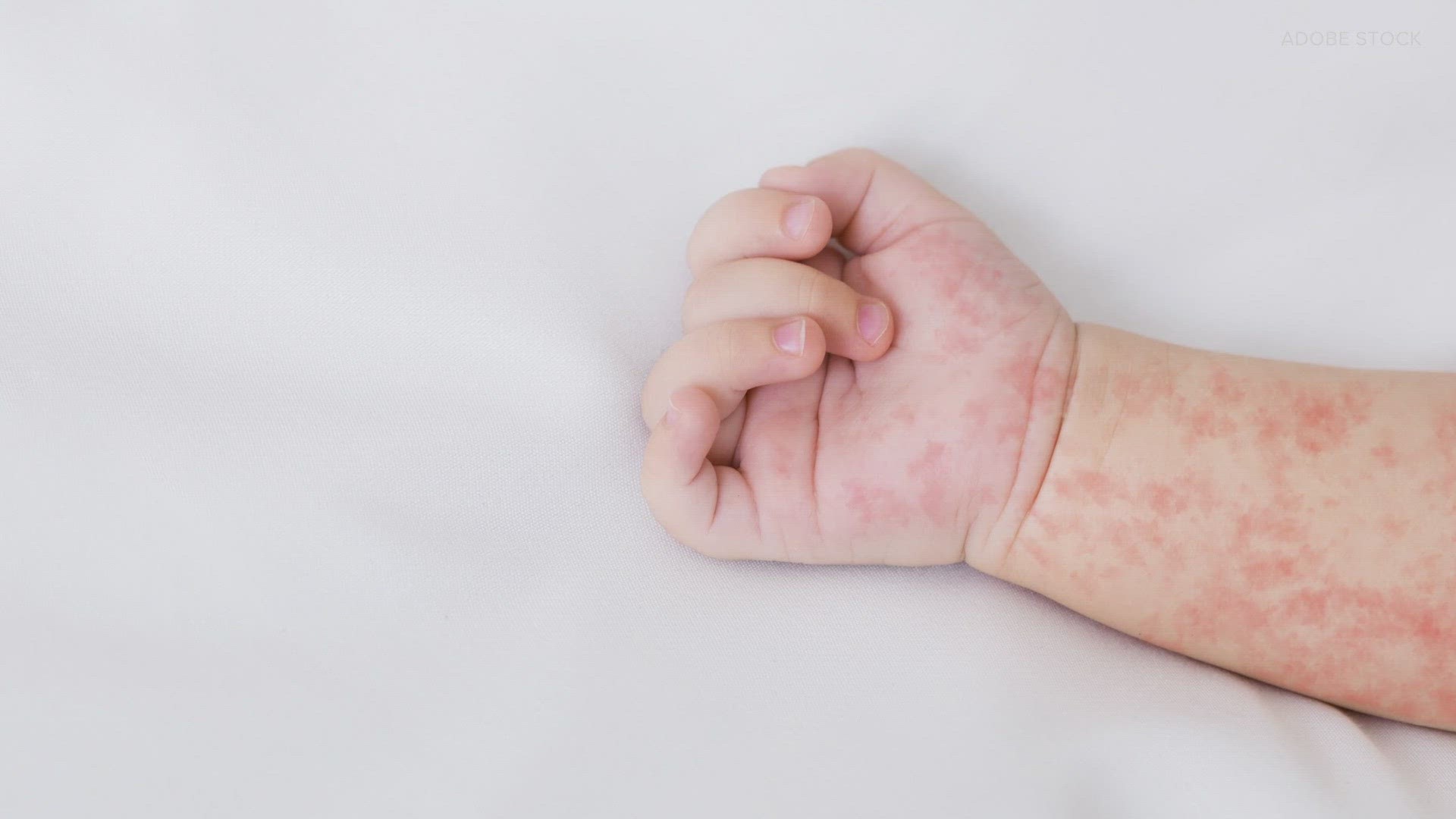SEATTLE — Measles cases are popping up at an alarming rate in the U.S., just as spring break travel ramps up in early April.
So far this year, there are 97 confirmed measles cases nationwide, according to data from the Centers for Disease Control and Prevention (CDC). That's compared to a total of 58 confirmed cases in 2023, according to the CDC.
HealthLink checked on the number of measles cases in Washington state in 2024 so far. There are three confirmed measles cases as of early April, according to the Washington Department of Health (DOH). All three cases are confined to Spokane County.
"It's concerning even if it's just one," said Dr. Jamilia Sherls.
Sherls, who serves as director of the Office of Immunization at DOH, said while three measles cases in all of Washington state seem low compared to other states, it's one too many.
"Measles itself is a very contagious disease," Sherls said.
Measles is a virus that was considered eliminated in the U.S. in 2000, but in recent years cases have reemerged.
Symptoms include high fever, cough, runny nose, and a rash. Severe complications like brain swelling and pneumonia can lead to hospitalization, especially among children.
"So that is very concerning to us because we don't want to see a spread or an outbreak of that disease because it does have potential to cause severe injury and death in a lot of cases," Sherls said.
DOH officials say all three people who caught the measles in Washington this year were unvaccinated. One is a minor under 18, the other two are adults.
For comparison, in 2023 there were a total of 11 confirmed measles cases reported in Washington, according to the DOH.
"We are seeing an increase in the amount of measles cases around the country right now, which further underscores the importance of vaccination," Sherls said.
Amid the latest measles cases, data compiled by DOH shows a slight decline in child immunization rates statewide, in recent years.
Among children ages 12 and under, routine childhood immunization, which includes the measles vaccine, trended downward from 2019 to 2022.
"Vaccine coverage declined the most in the 19 to 35-month age group. Specifically, 57% of this age group had all routine vaccinations at the end of 2021, whereas in 2019, it was about 67%," Sherls said.
Sherls said public health will pay close attention to any declines no matter how slight.
"We consider it significant and we take any decline in childhood vaccine coverage rates as a serious event. It's significant for us," Sherls said.
The reasons for the slight decline are multi-pronged. Sherls said pandemic-related disruptions in healthcare services made it more difficult for families to make their routine health appointments.
Sherls also pointed to vaccine misinformation and vaccine "fatigue" that emerged during the height of the COVID-19 pandemic.
But there are signs of improvement, with childhood vaccination coverage now becoming more stable, according to Sherls.
"All in all, the reality is that the vast majority of parents are still making the choice to get their kids vaccinated, which is great to see," Sherls said.
For more information on vaccine providers across the state, visit here.
DOH also has information on childhood immunization requirements posted in several languages here.
Adults who have had their childhood measles boosters are typically not required to get another measles shot but if there are any immunity concerns, Sherls said they should discuss it with their doctor.
Measles cases remain at 3 in WA amid rising nationwide cases: HealthLink
HealthLink talks with state public health officials about childhood immunization rates in WA amid a concerning rise in measles cases in the U.S.

